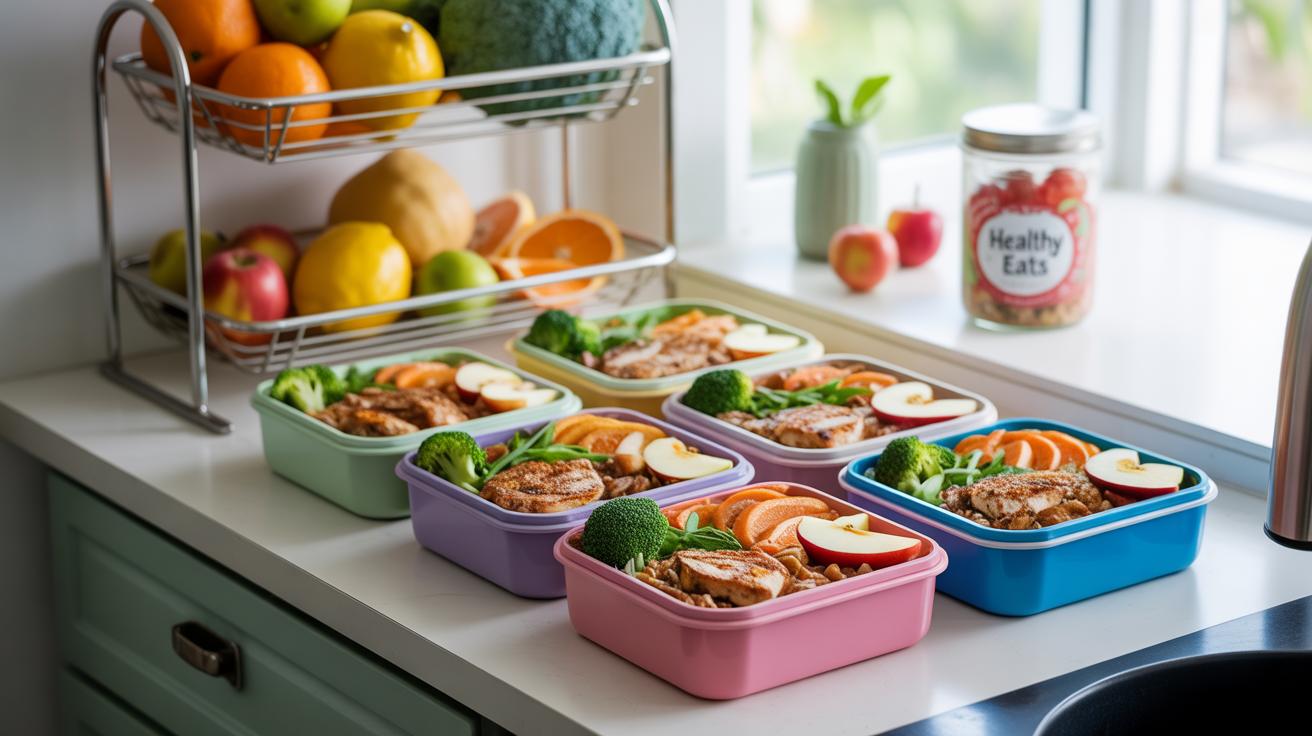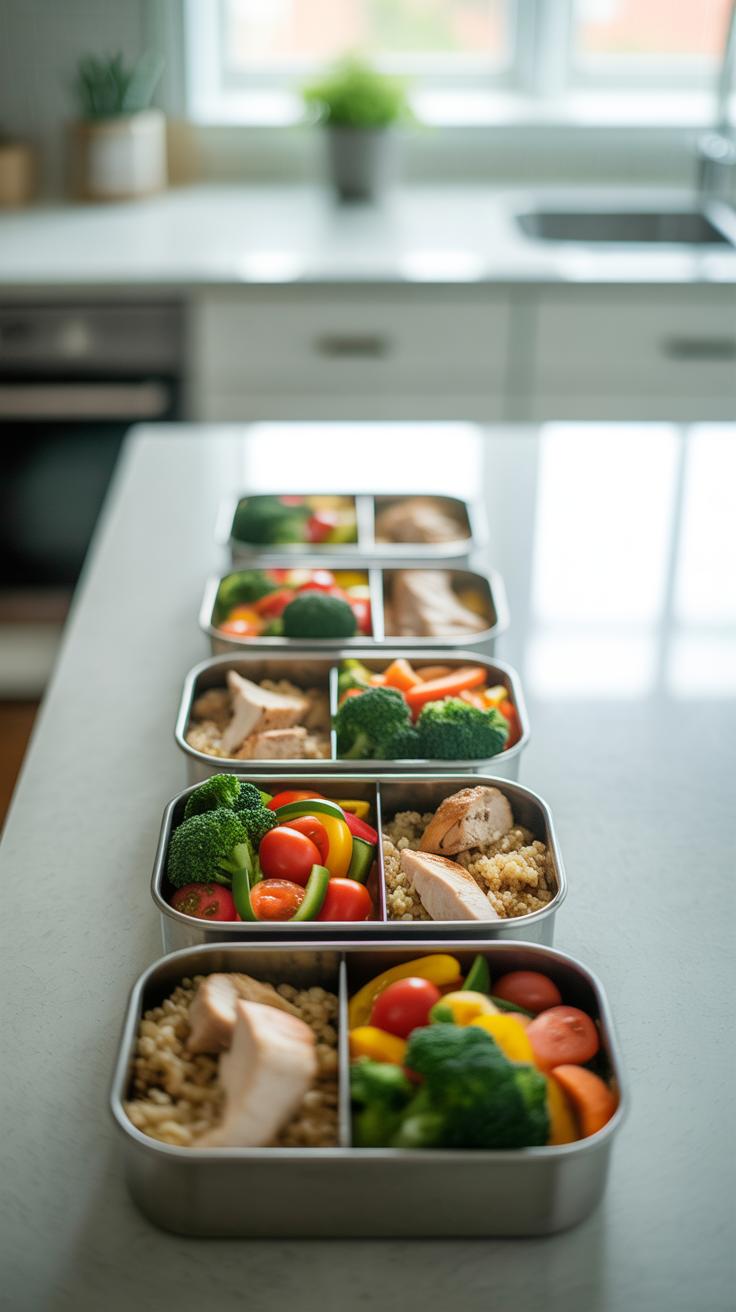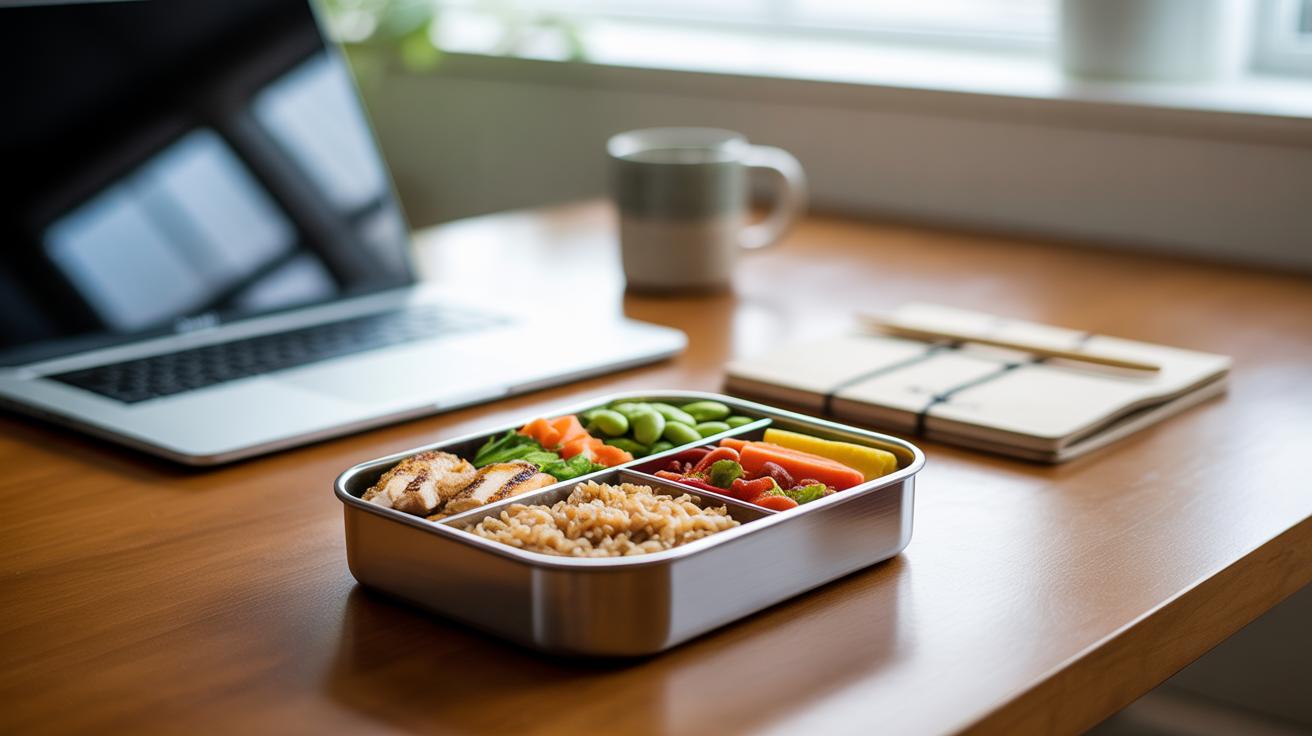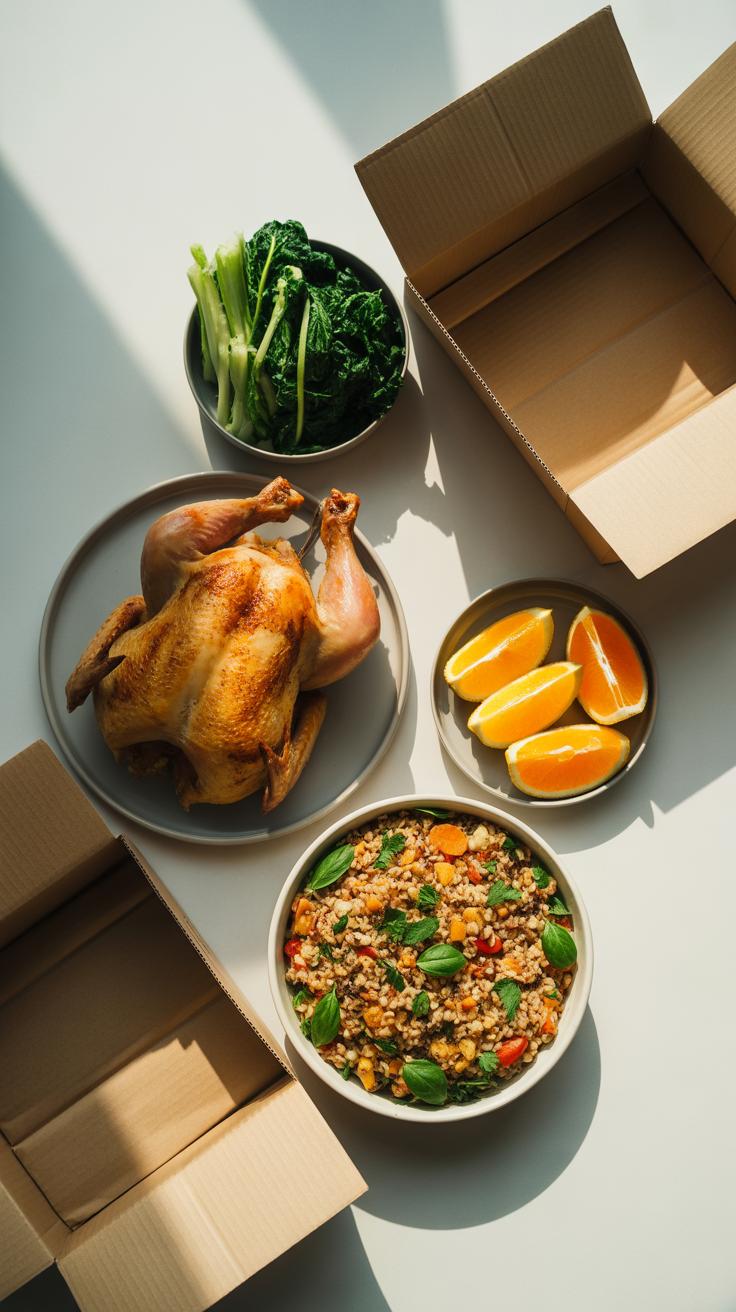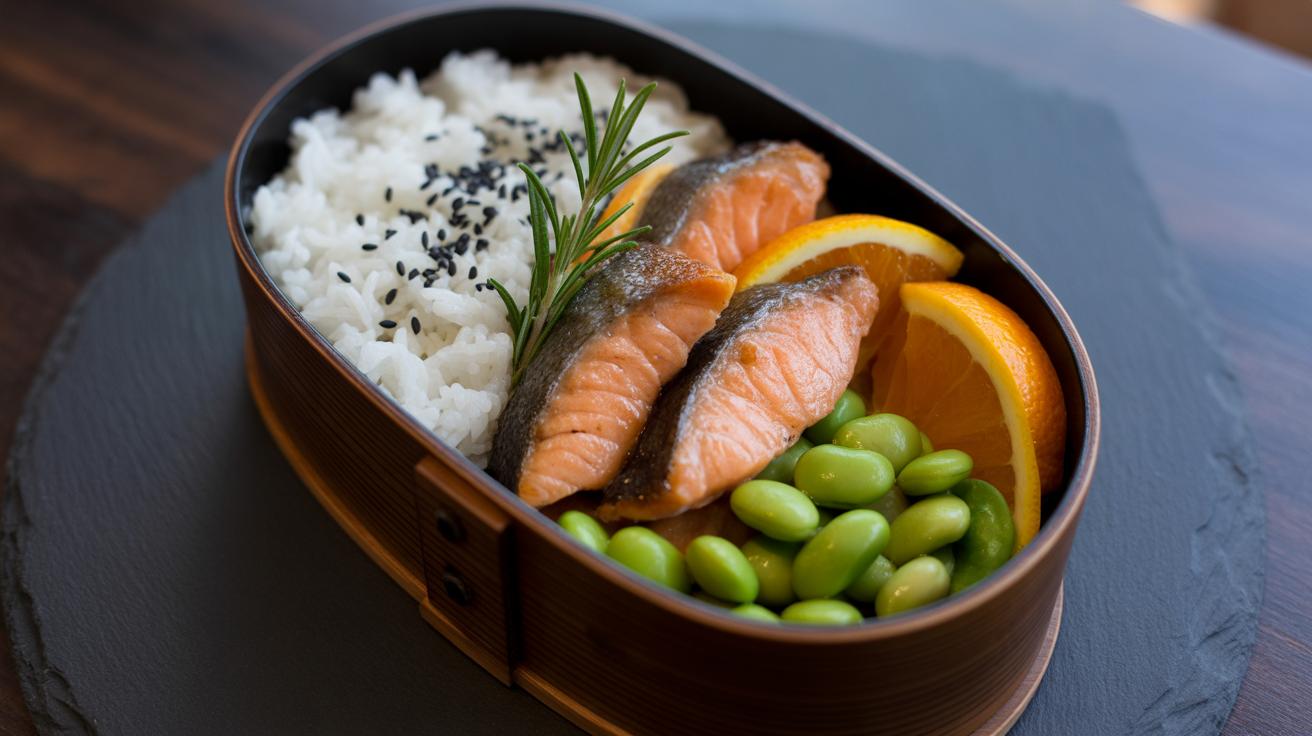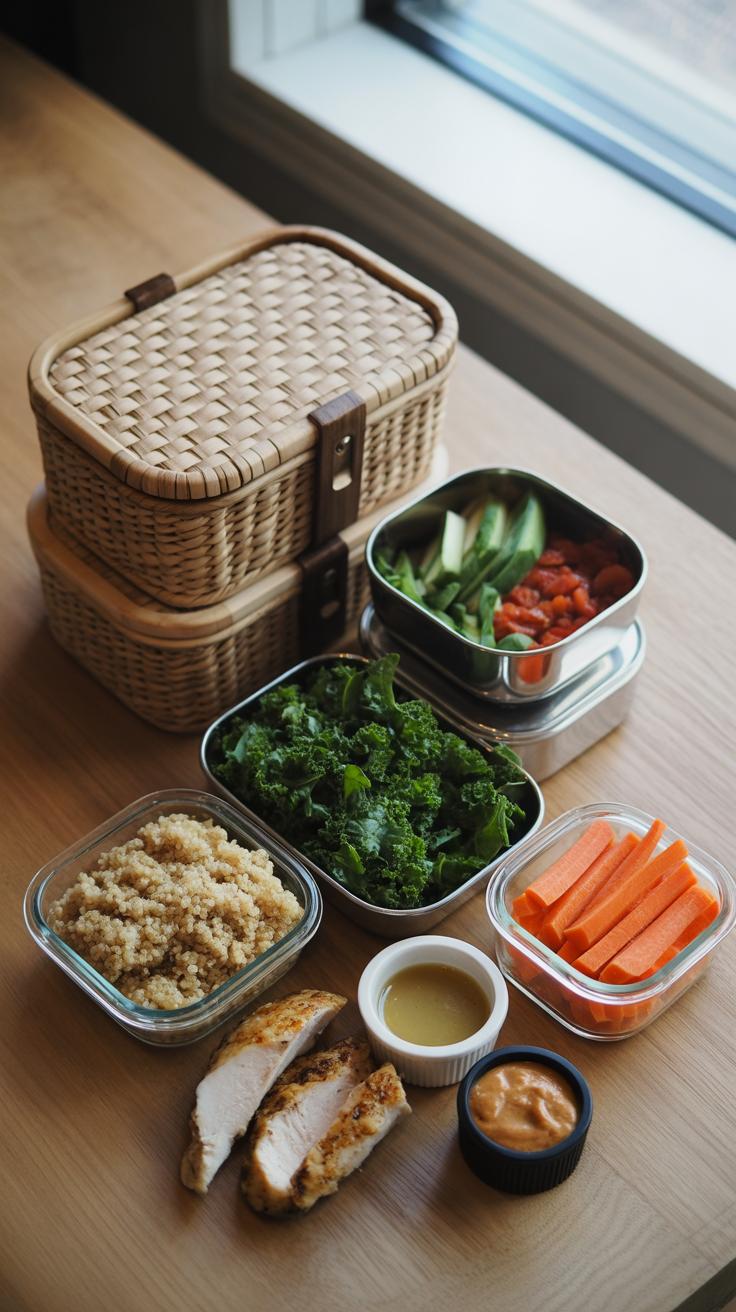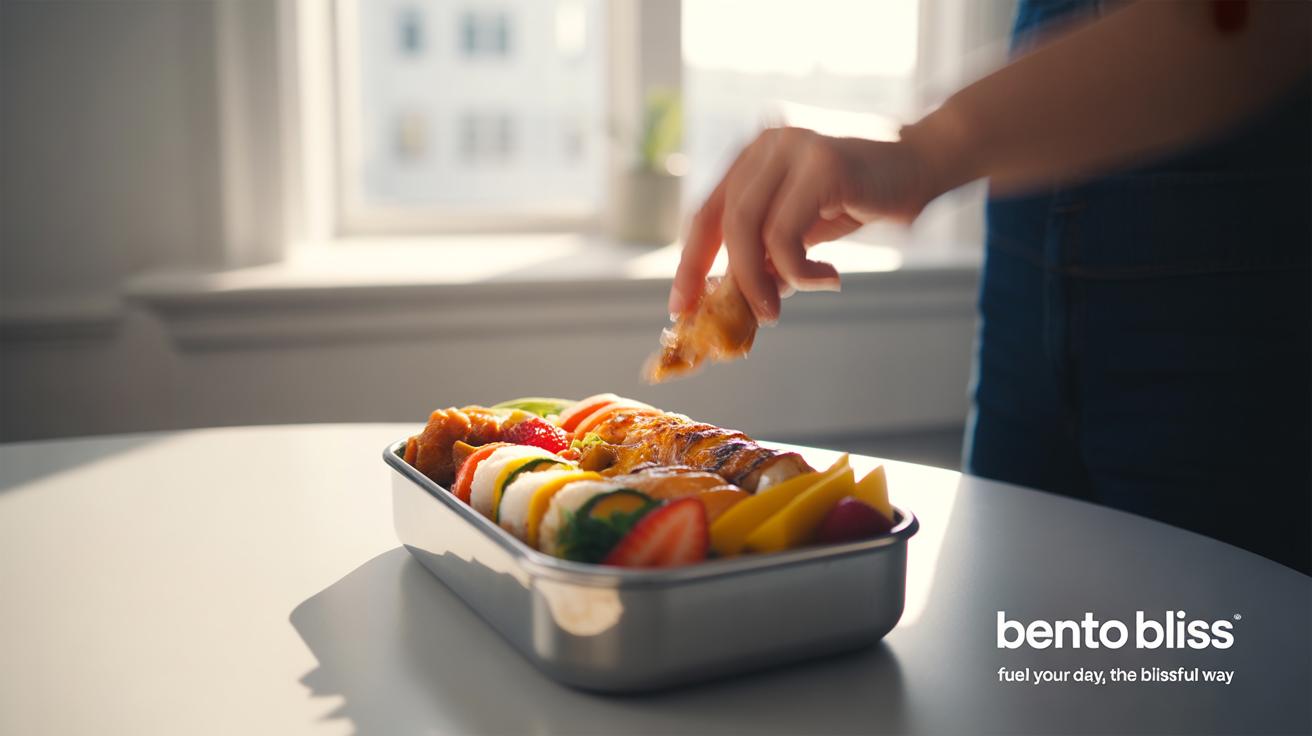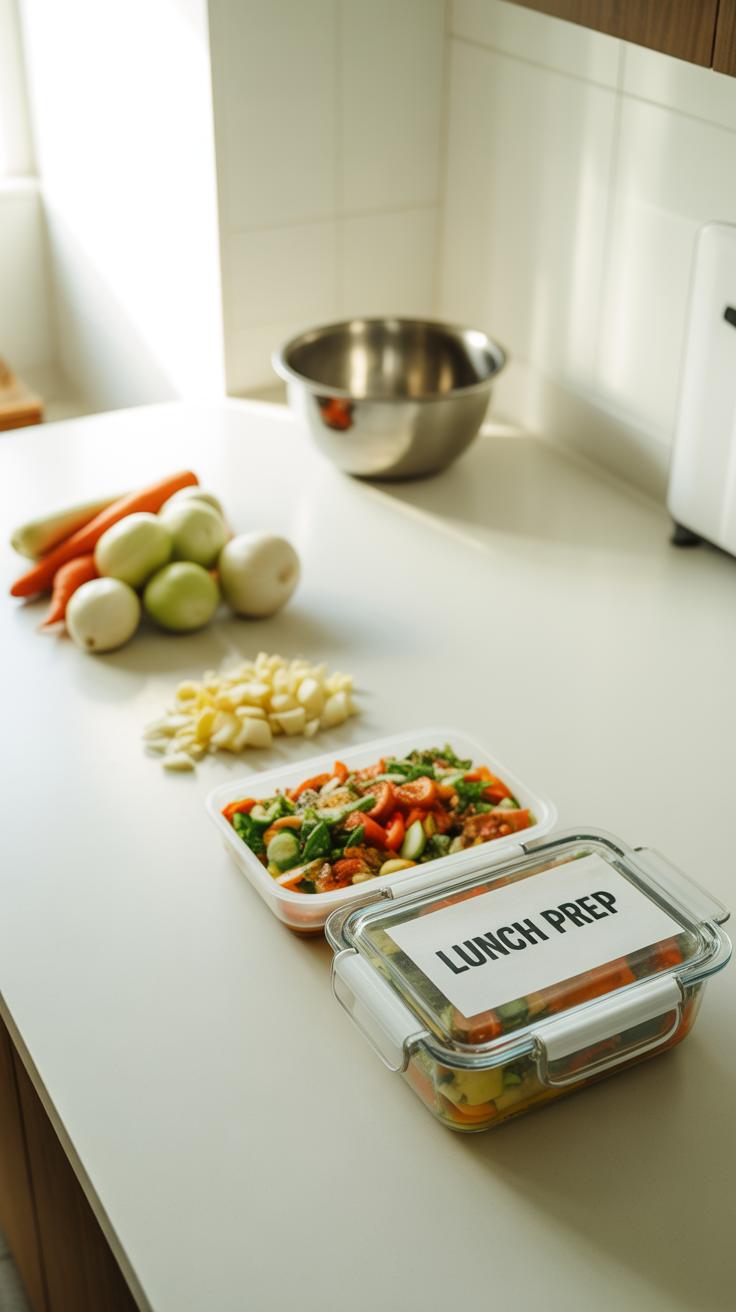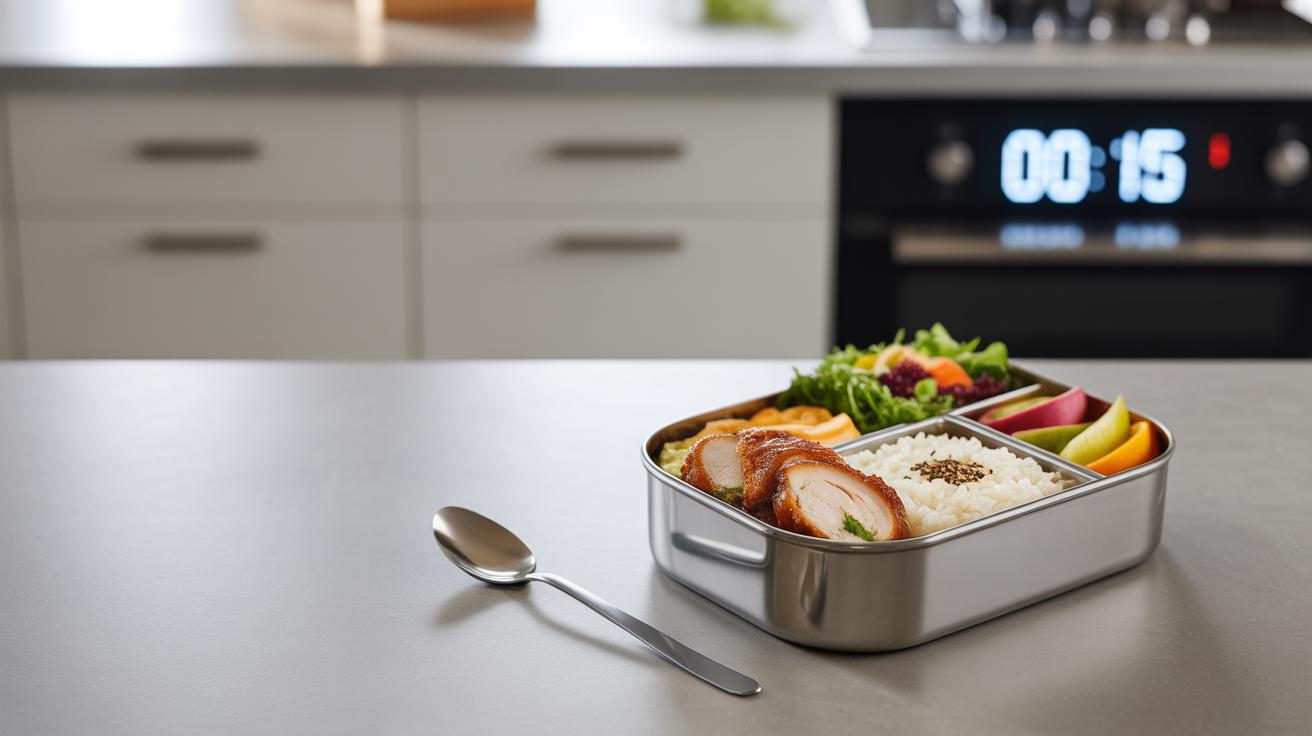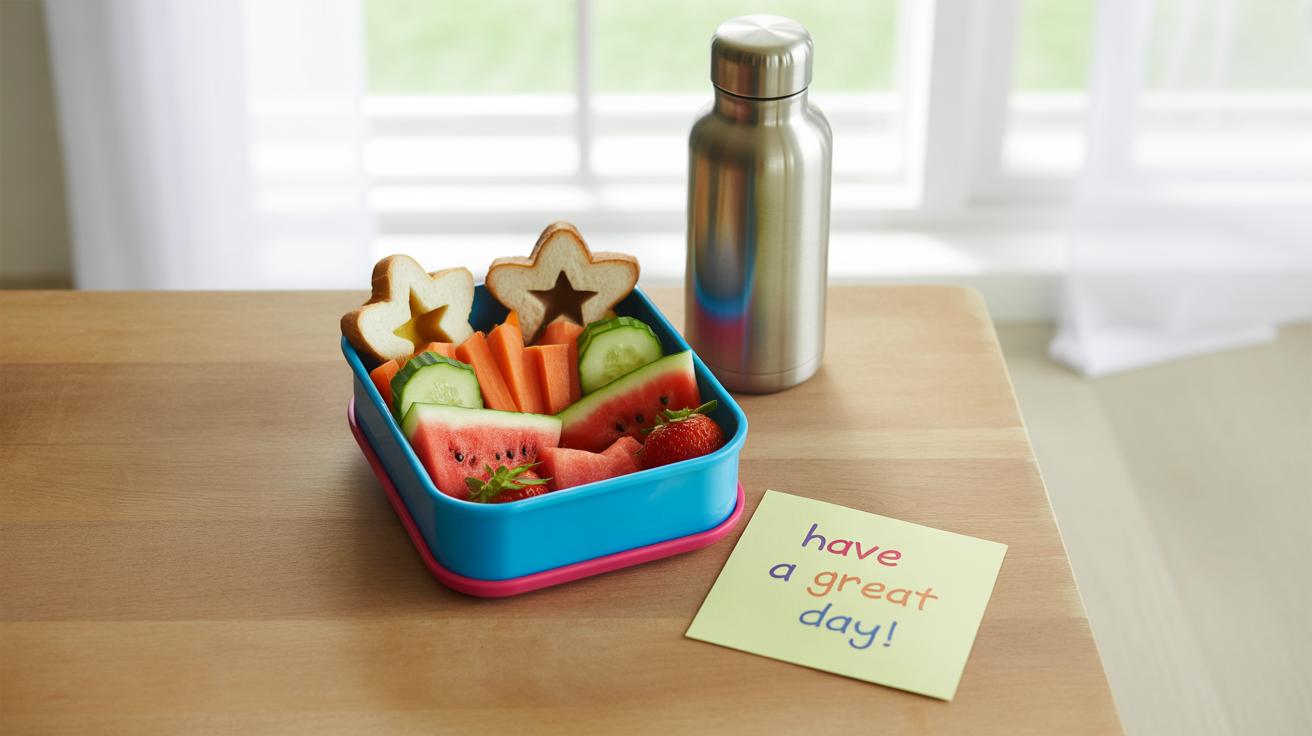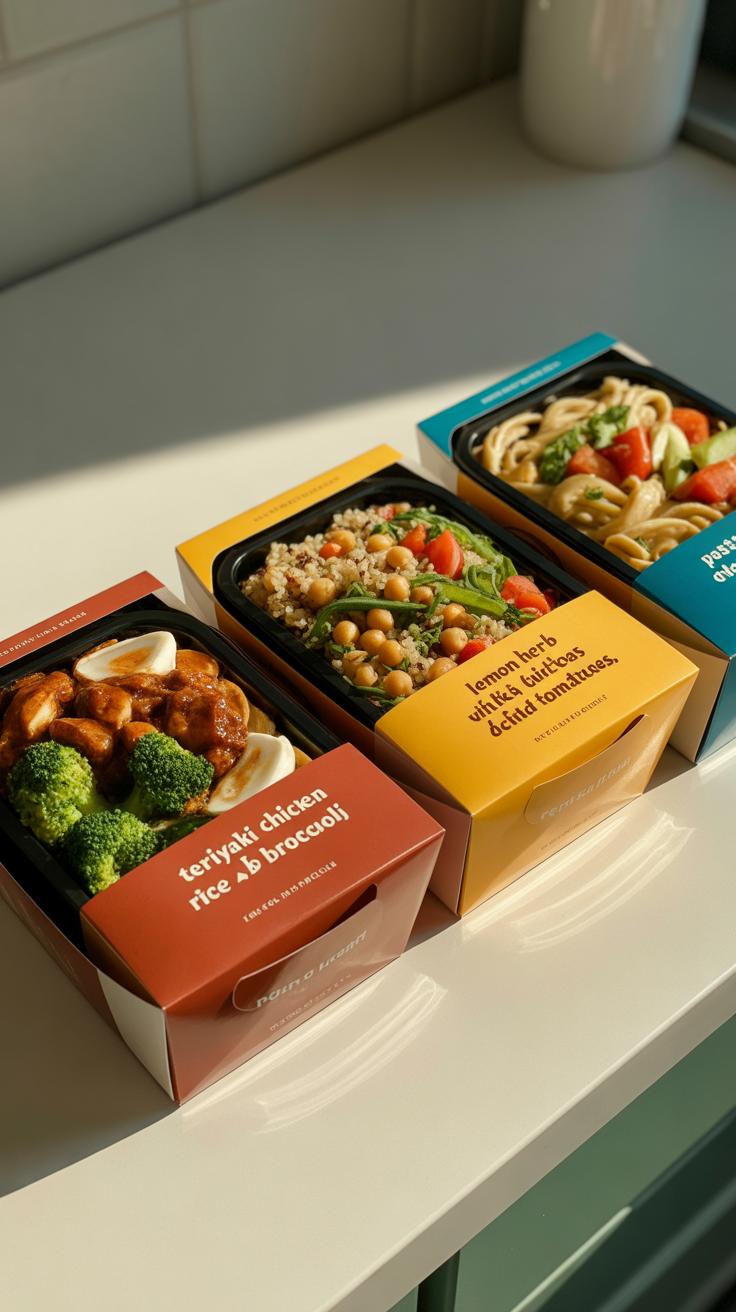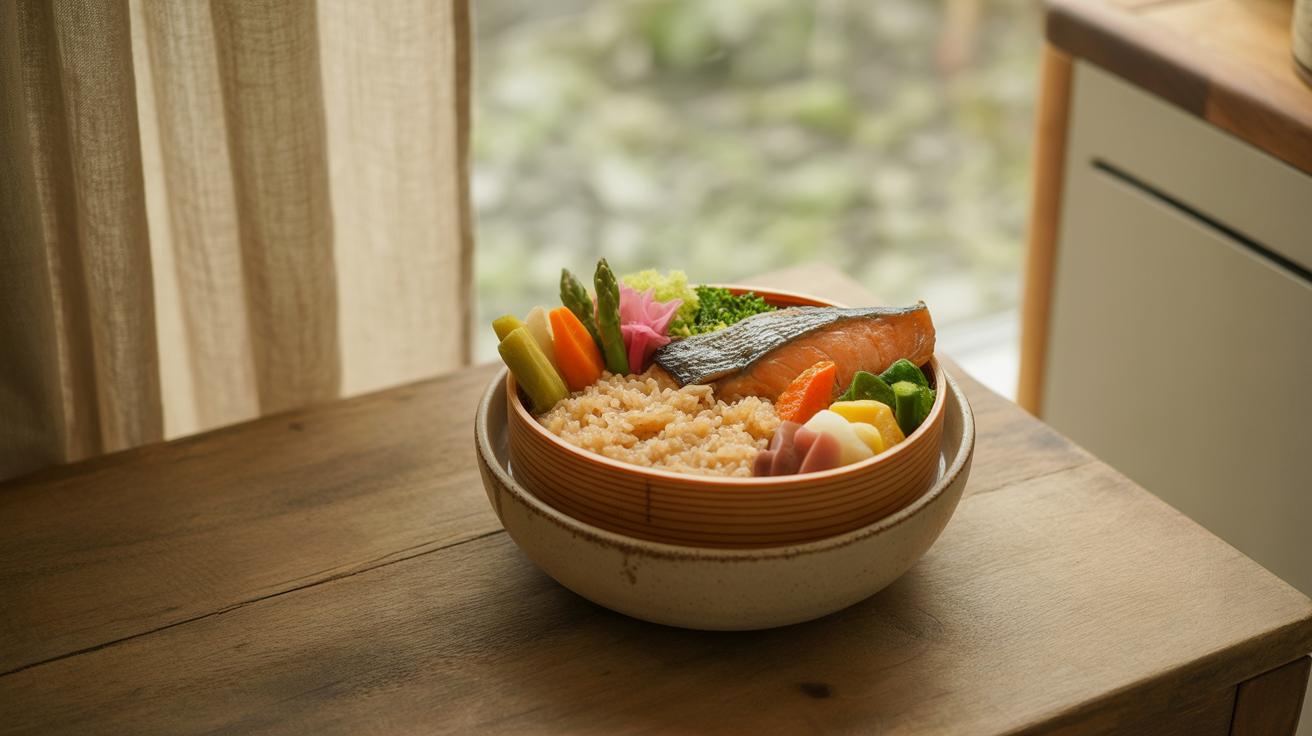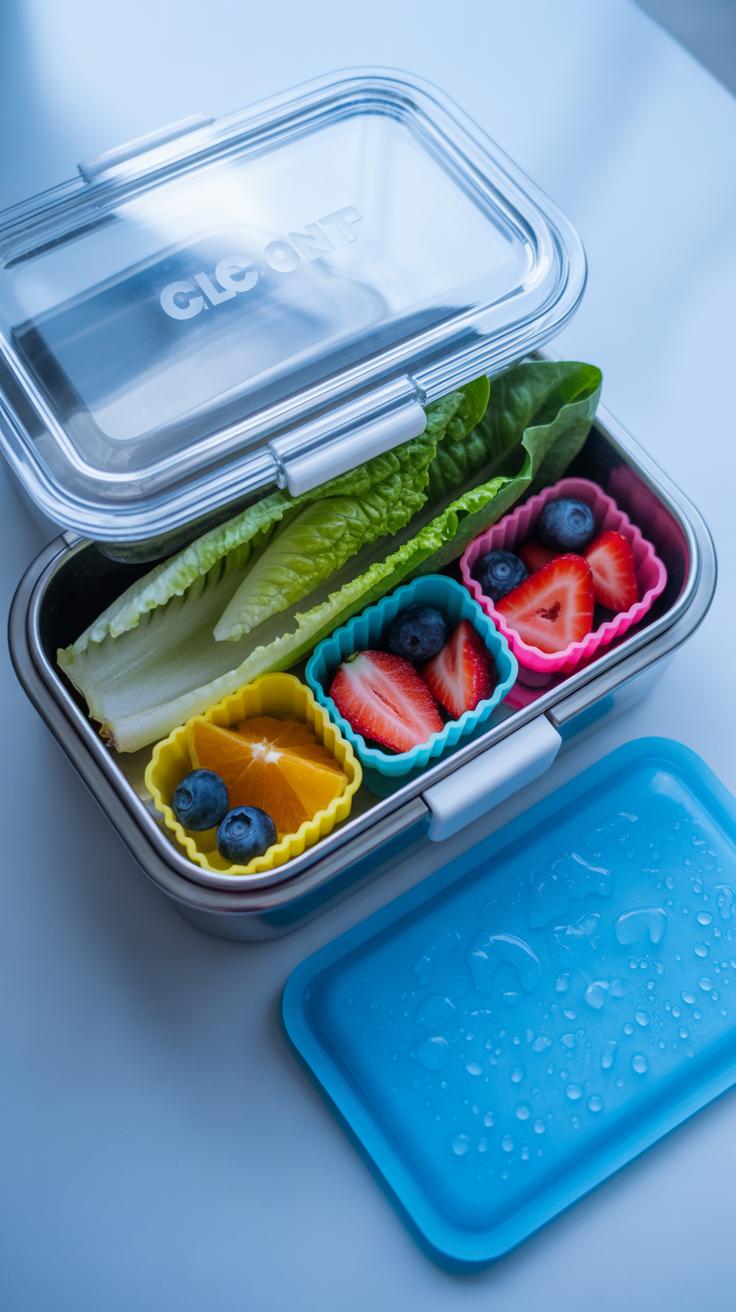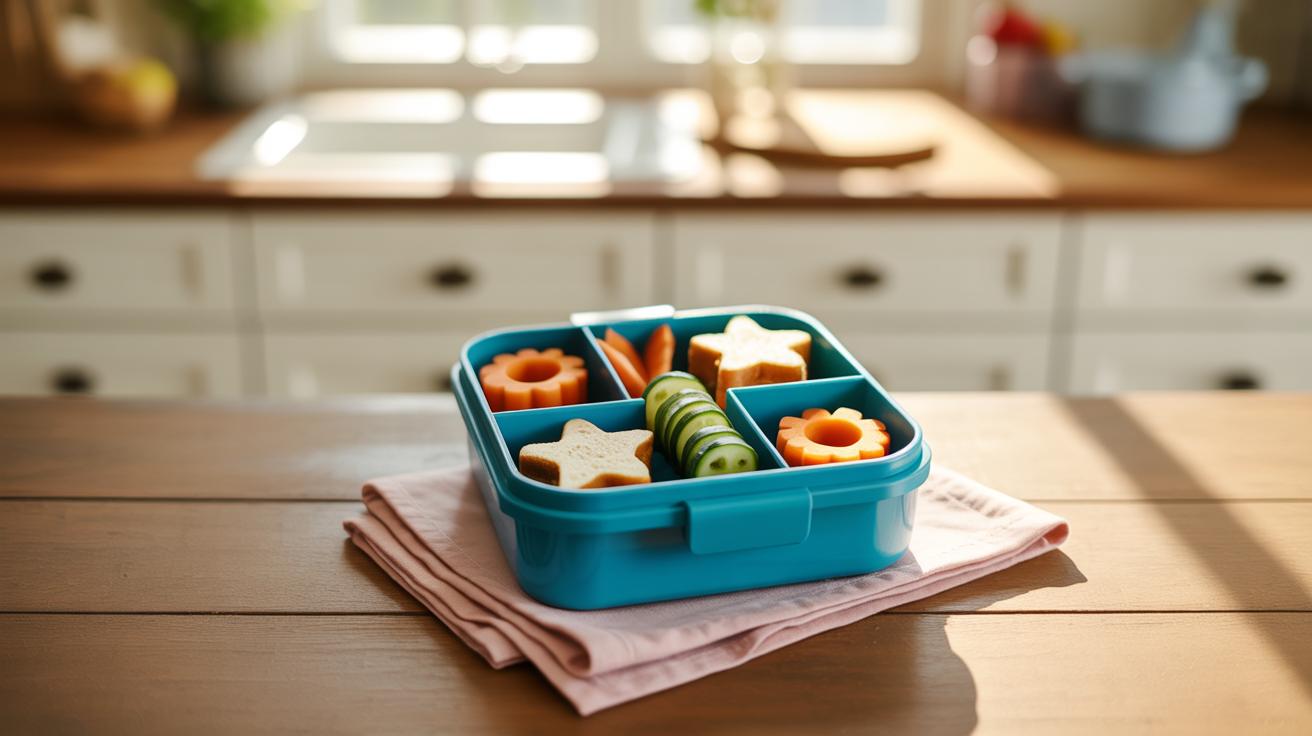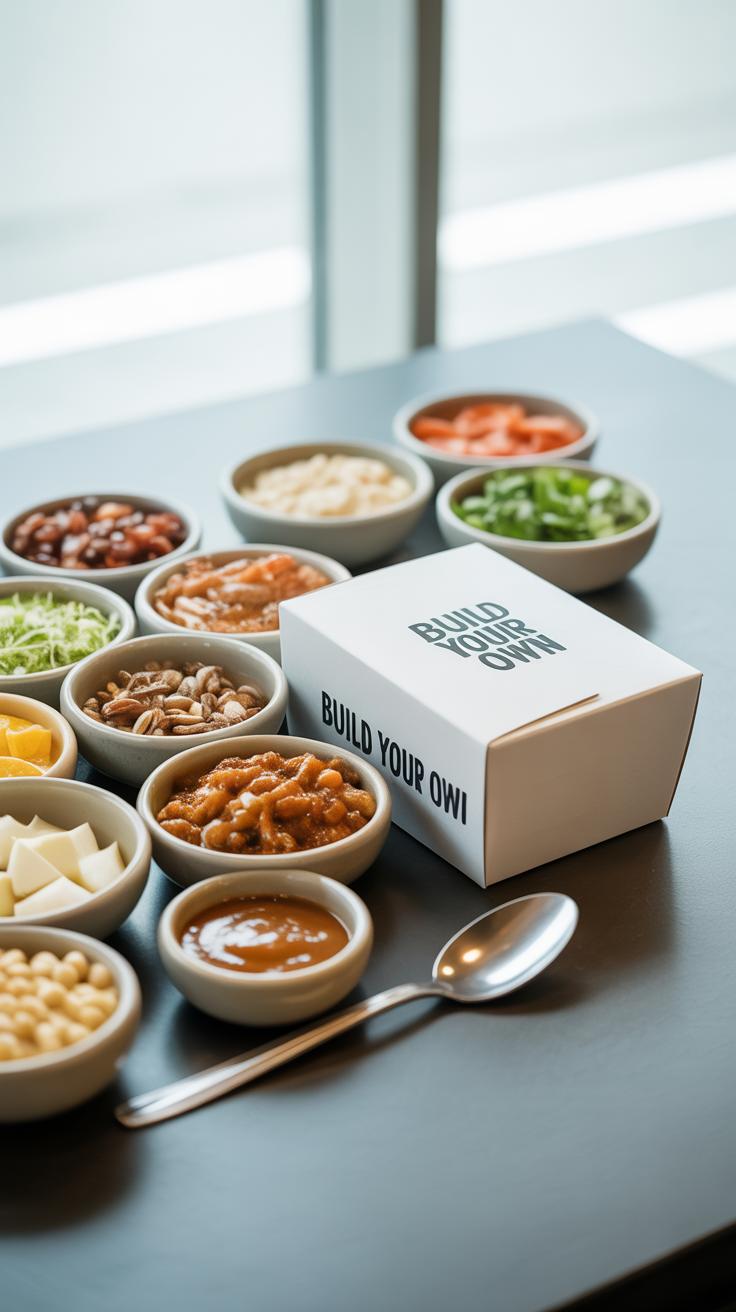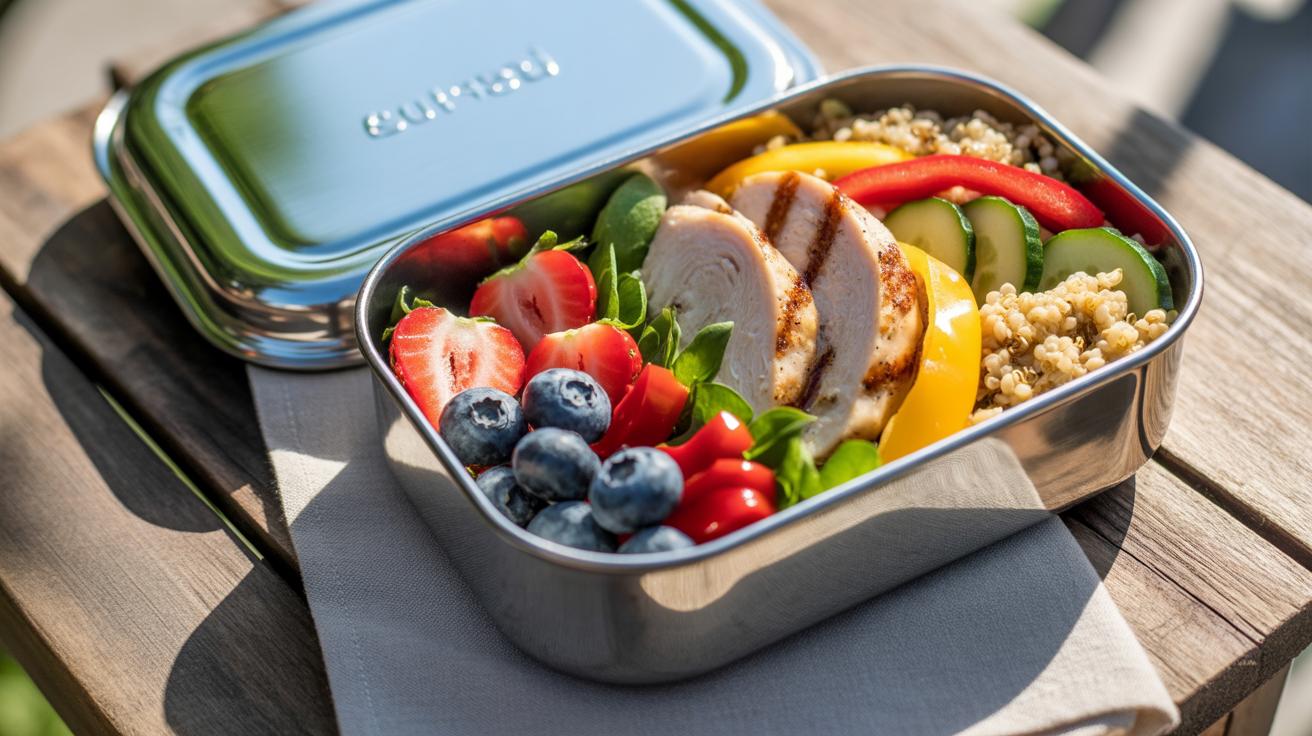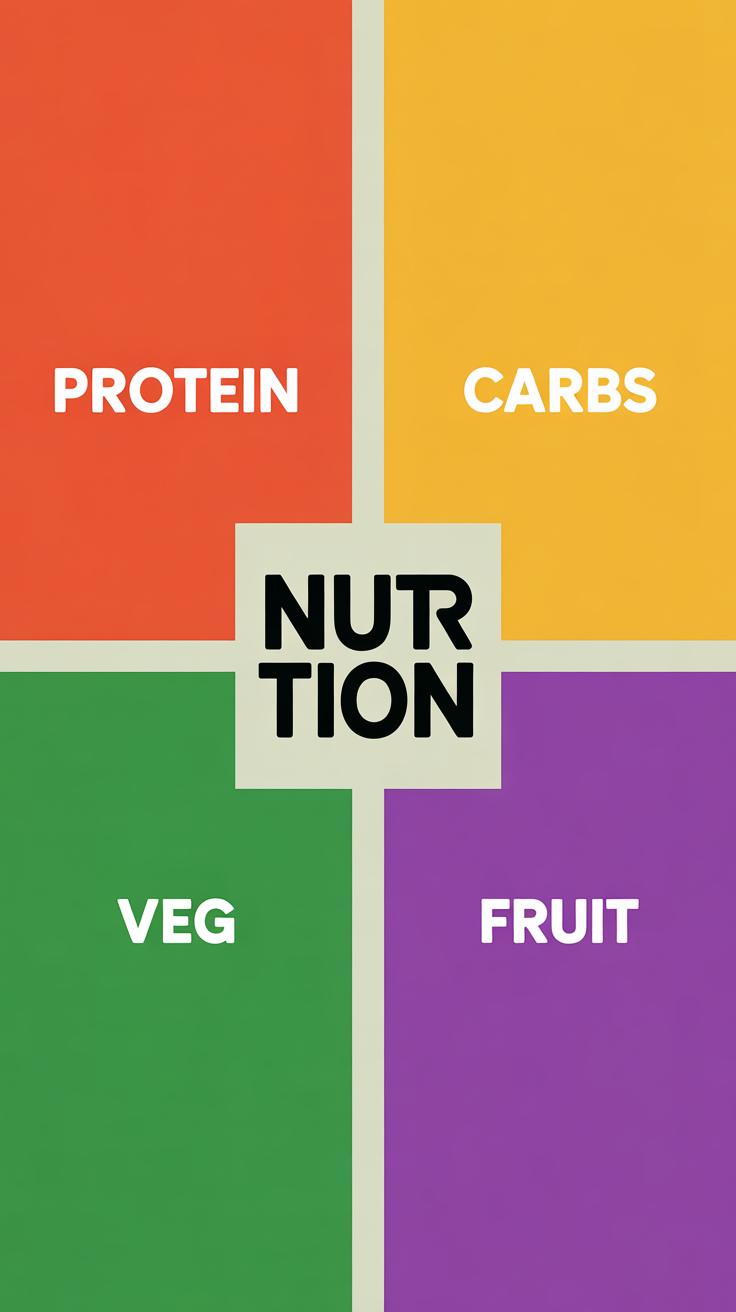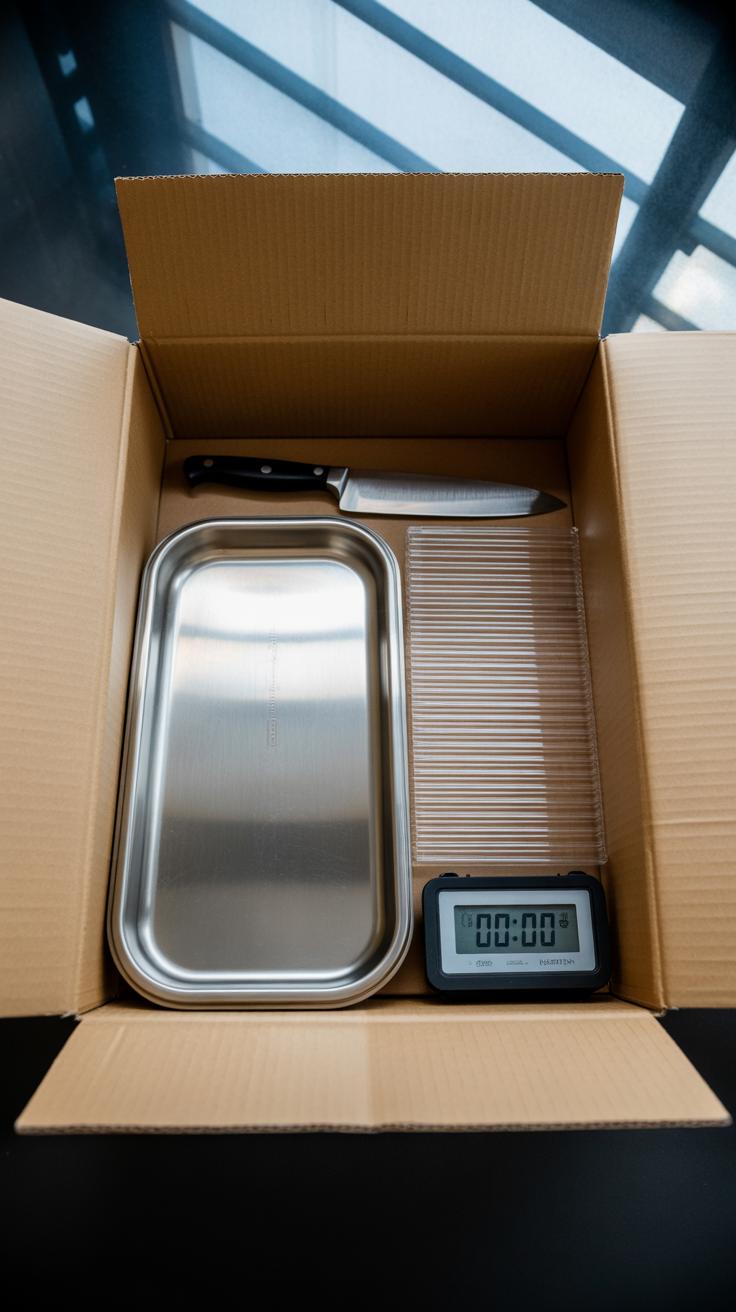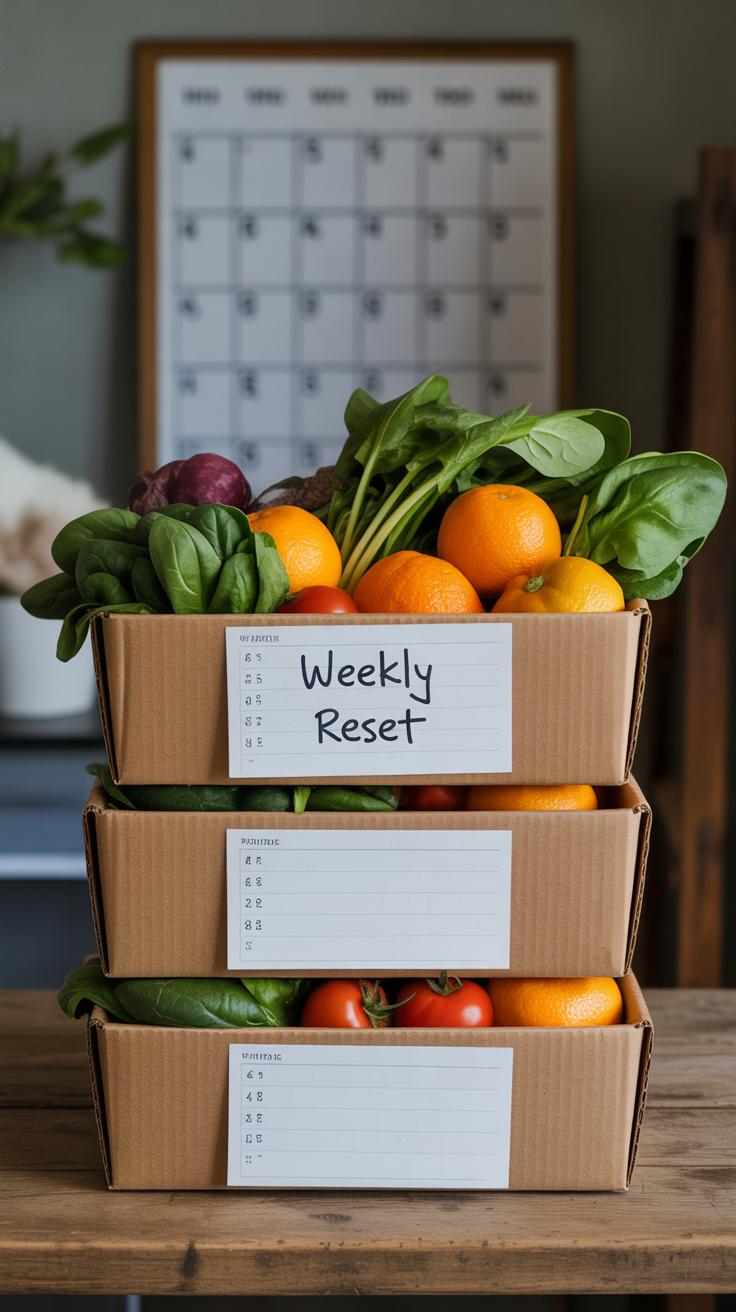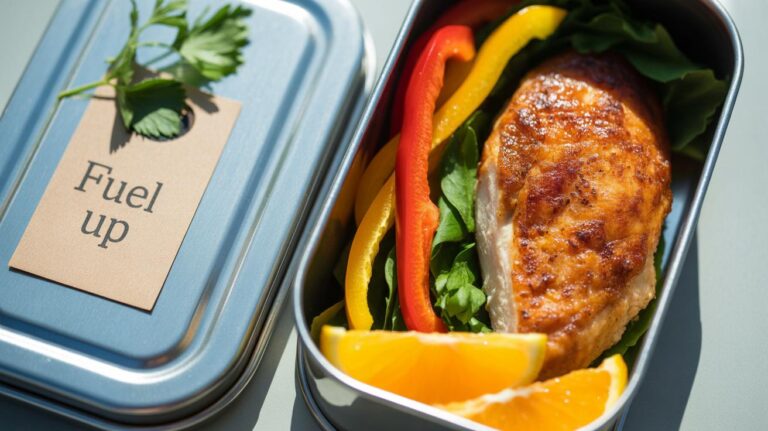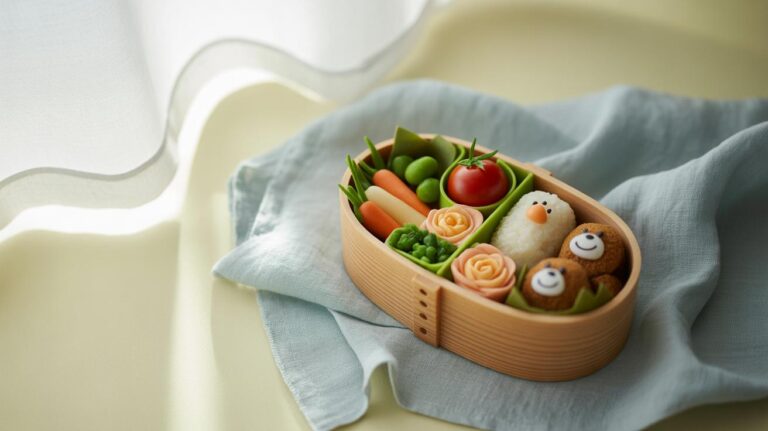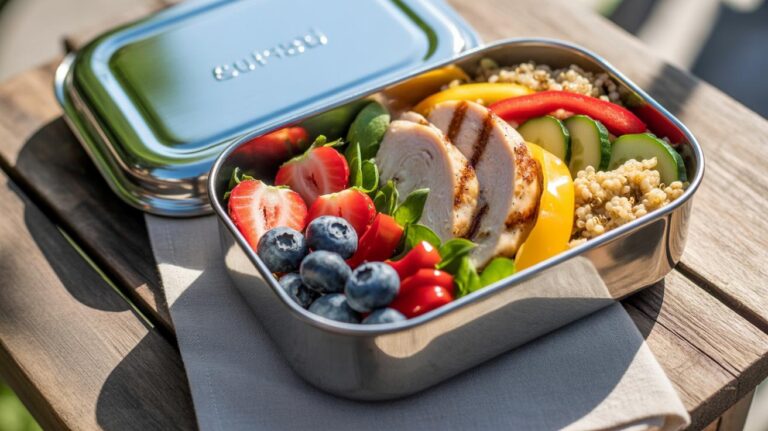Introduction
Lunch Box Recipes You Can Prep On Sunday help you save time and eat healthy throughout the busy week. Preparing your meals ahead means less stress during your mornings and balanced nutrition every day.
In this article, you will learn how to plan, prepare, and store lunch box meals on Sunday. We will explore simple recipes, easy steps, and tips that anyone can use. This way, you get delicious meals without daily cooking hassle.
Benefits of Preparing Lunch Boxes on Sunday
Preparing your lunch boxes on Sunday can change the way your whole week unfolds—sometimes in subtle ways you don’t notice until later. For one, it cuts down the mad dash of weekday mornings. Instead of scrambling to throw something together, you simply grab your ready-made meal and go. That extra few minutes might not seem like much, but over five days, it really adds up. You might find yourself less stressed, or maybe even have a moment to enjoy breakfast instead of skipping it altogether.
There’s also a kind of order that comes with having meals prepped ahead. When you have a plan locked in, your grocery shopping is more focused, and it’s easier to keep track of what you have in the fridge. I mean, how often do you accidentally buy that extra bag of chips or that one more snack that ends up wasted? Meal prepping helps avoid that, which can feel like a small win for your wallet.
Speaking of money, cooking in bulk on Sunday often lowers your weekly food costs. Buying ingredients for multiple meals means you can buy larger portions or take advantage of discounts. Plus, using leftovers creatively feels less like recycling and more like smart cooking.
Another thing is nutrition. When you make your own meals, you control the ingredients. You decide the salt, the oil, the veggies. I’ve noticed I eat better when I prepare in advance because I’m not tempted by whatever’s easiest or quickest. Of course, sometimes you just want a sandwich from the corner store, and that’s okay too.
Choosing Recipes That Work for Sunday Prep
Picking lunch box recipes for Sunday prep means thinking about how well the food holds up over several days. Not everything tastes great after sitting in the fridge until Thursday, right? So, focus on dishes that either improve or at least maintain their flavor and texture with time. Casseroles are a classic choice here—they tend to deepen in taste and stay moist. Think lasagnas or baked pasta dishes that just seem to get better as they rest.
Salads can work too, but you might want to build them with sturdier ingredients like kale or quinoa to avoid that soggy mess. And maybe keep sauces separate until mealtime; it’s a small step but pays off in freshness.
For quick bulk recipes, pasta and rice bowls stand out because they’re flexible—you can toss in different proteins, veggies, or dressings without much fuss. Wraps are another winner; assemble a bunch, wrap tightly, and you’re set with grab-and-go options. Of course, you could try something like chili or stew—those freeze and reheat well, too.
What works for you might be a bit different. Perhaps you don’t mind reheating something soft, or you prefer assembling parts each day. It’s a bit of trial and error until you find what fits your taste and routine best.
Essential Ingredients for Sunday Lunch Prep
When you prep lunches on Sunday, having the right ingredients on hand makes all the difference. Proteins that cook well in bulk and keep their texture for a few days are key. Think chicken breast—it’s pretty much a staple, easy to season, and slices up neatly for wraps or salads. Beans are another favorite of mine. You can switch between black beans, chickpeas, or kidney beans depending on your mood. They store well and add a good plant-based punch. Tofu might not be everyone’s first thought, but it absorbs flavors so well and stays firm when pressed and cooked properly.
Vegetables and grains are just as crucial. Some veggies really hold up better than others over several days. Carrots, bell peppers, and cucumbers keep a nice crunch if stored right. Greens like kale or spinach, well, they’re a bit trickier—you have to use them earlier in the week or prep them carefully. Grains such as quinoa, brown rice, or farro can be cooked in bulk and really help round out your lunch. They last well in the fridge and add substance without fuss.
Do you ever wonder if you’re buying ingredients that just don’t last? I sometimes wonder if I’m overstocking perishables. But with these go-to staples, you get flexibility and time saved during the week. Which ingredient do you find yourself reaching for most often?
StepbyStep Sunday Meal Prep Process
Start by setting aside dedicated time on Sunday—maybe a few focused hours in the morning or early afternoon. Begin cooking with the recipes you planned. If you’re making multiple dishes, cook similar items together, like roasting vegetables while boiling grains to save time. Don’t rush; it’s tempting to multitask quickly but taking small breaks can help prevent mistakes or forgotten steps.
Once cooked, cool your meals slightly before dividing them into portions. I find using measuring cups or a kitchen scale handy—helps keep portions consistent and prevents overeating during the week. Pack each meal thoughtfully, separating ingredients that could get soggy, like dressings or crunchy toppings, so freshness is maintained.
Label containers with the date or meal type to avoid confusion when grabbing lunch. This also makes it easier to rotate meals through the week without risk of eating older food. Little touches like packing a small ice pack in your lunch box can keep dishes fresh, especially if refrigeration isn’t guaranteed during the day.
Organizing Your Kitchen and Ingredients
Before cooking, clear your workspace—it can change everything. Wash surfaces, set out your essential tools like knives, cutting boards, and storage containers. Having ingredients pre-measured and within easy reach cuts down last-minute searches and stress.
Plan your prep steps in order. Group tasks: chopping all vegetables first, then starting proteins next. That way, you avoid washing the same utensils multiple times or scrambling around trying to find a tool mid-task.
Clean as you go if you can. Otherwise, allocate time after cooking to reset your kitchen. This little habit makes the next Sunday feel less daunting. It might seem tedious, but it’s a time-saver overall—you’re less likely to put off meal prep if the kitchen feels manageable.
Packing and Storing Lunch Boxes Safely
When portioning, think about your appetite and activity level during the week. Too much food can lead to waste, too little means you might feel hungry. Containers with divided sections come in handy, especially if your meal has different components.
To keep food safe, cool dishes thoroughly before sealing lids. Warm food sealed tightly creates condensation, which can spoil the meal faster. Store lunch boxes in the refrigerator where they’re easy to grab, but make sure airflow isn’t blocked to prevent bacteria growth.
Some ingredients store better separately. For example, keep sauces in small jars or dressings in little containers rather than mixed in with salads. This stops sogginess and lets you control flavors later. Using airtight containers helps maintain taste and texture, so your lunch doesn’t feel like leftovers by midweek.
Sample Recipes You Can Prep on Sunday
Healthy Grain Bowls
Grain bowls make for a solid lunch. They’re filling and easy to prepare ahead of time. A basic recipe could start with a base of cooked quinoa or brown rice—both hold up well in the fridge. Add a protein like grilled chicken, chickpeas, or boiled eggs. Then toss in some veggies that don’t get soggy quickly, such as roasted carrots, cucumbers, or steamed broccoli.
Dress it lightly with a simple lemon-tahini sauce or olive oil and herbs just before eating, so the grains don’t get mushy. I find that layering your bowl in containers, with the dressing on the side, keeps everything tasting fresh throughout the week. You might wonder if the texture changes—but if you stick to sturdier ingredients, it usually works out fine, even by Friday.
Easy Wraps and Sandwiches
Wraps and sandwiches are tempting for lunch prep, but they can turn soggy quickly. To avoid that, build them with firm, less watery fillings. Think turkey, cheese, hummus, and crunchy veggies like bell peppers or shredded carrots. Avoid tomatoes or anything that releases moisture unless you pack those separately.
Consider assembling wraps tightly and wrapping them in parchment paper before sealing in airtight containers. For sandwiches, using thicker bread or toasting it can help maintain texture. I’ve learned the hard way that layering greens away from the bread prevents sogginess better. Also, keeping sauces separate until right before eating makes a noticeable difference. You have to experiment a bit to find what your taste buds prefer by midweek.
Tips for Keeping Your Lunch Fresh
Keeping your Sunday-prepped lunch tasting good through the week takes more than just making the recipes. The containers you pick can make or break the freshness and flavor of your meals.
Look for containers that seal tightly but still let your food breathe a bit—you want to hold moisture without turning things soggy. Glass containers with snap-on lids work well, especially if you can pick ones with compartments that keep ingredients separate until mealtime. If you prefer plastic, make sure they’re BPA-free and don’t warp easily in the fridge or freezer.
Think about what you’re packing. Salads or anything with dressings might benefit from a small separate dressing container to prevent sogginess, while warm meals do better in insulated containers that retain heat if you don’t have access to a microwave.
Storing your meals properly is just as crucial. Pack everything as cool as you can before popping it in the fridge. The fridge door tends to fluctuate temperature, so place your lunch boxes on a stable shelf. Some meals even freeze quite well if you want to prep in bulk and thaw as needed—soups and stews are classic examples here.
Do you find some meals get weird in the fridge after a couple of days? Maybe check how airtight your containers really are or if your refrigerator is set at the right temperature—usually around 37-40°F. Sometimes freshness isn’t just about the food but how you store it.
Adapting Recipes to Your Taste
When prepping lunch box meals on Sunday, don’t feel locked into the original recipe. You can easily tweak them to suit your preferences or dietary needs without much extra work. Sometimes, I find that even small swaps make a surprising difference, like using chickpeas instead of chicken for a vegetarian option. It’s not just about replacing ingredients either—think about the way you season your food.
Adding Different Spices and Sauces
Spices and sauces can completely change a dish without adding steps to your prep. For example, tossing roasted veggies with a sprinkle of smoked paprika or a dash of cumin can make the meal taste like a whole new experience. A drizzle of soy sauce or a squeeze of lemon juice can bring freshness or a punch of umami that keeps things from becoming dull. Maybe try curry powder one week, then swap to garlic and herb blends the next. These little flavor boosts can keep your lunches something you actually look forward to.
Swapping Ingredients for Variety
If you get bored eating the same proteins or vegetables every week, switching them out is surprisingly simple. Swap chicken for tofu or turkey for beans. Instead of broccoli, try roasted Brussels sprouts or steamed green beans. Doing this not only changes the taste but also helps you get a wider range of nutrients. I found that alternating ingredients also helps reduce waste—I don’t have to buy a big batch of the same thing, which sometimes just sits in the fridge.
Are there flavors or textures you like more than others? Experiment with those. Why stick to one recipe when a few small shifts can keep your Sunday meal prep interesting for weeks?
Balancing Nutrition in Your Lunch Boxes
When packing your lunch box on Sunday, thinking about balance can actually make your week easier. A good rule of thumb is to include protein, carbs, and vegetables in each meal. For protein, options like grilled chicken, boiled eggs, or beans work well and keep you full for longer. Carbs can be whole grains—think quinoa, brown rice, or whole wheat pasta; they give you steady energy without that crash. Veggies add fiber and vitamins, but it’s okay if they’re not mountains of greens every day—a handful of cherry tomatoes or some steamed broccoli can do wonders.
Portion sizes don’t need to feel complicated. You don’t always have to measure exactly. A simple approach could be:
- Protein about the size of your palm
- Carbs roughly a cupped hand
- Veggies filling half the container
This rough guide nearly always works well, though sometimes I find myself eyeballing portions a bit off when hunger or leftovers call for flexibility. It’s fine—it’s a balance, not a perfect science. Also, rotating your foods by mixing protein sources, swapping grains, and trying different vegetables keeps things both interesting and nutritious. You might be surprised how much you enjoy lunch when you look forward to tasting different colors and textures instead of eating the same thing every day.
Including all these food types addresses your body’s needs and helps prevent that mid-afternoon crash. But don’t stress too much if one piece feels smaller or bigger than usual. The goal is to keep it varied and satisfying, not to follow strict rules you dread.
Saving Time with Kitchen Tools
Using Cookers and Timers
Slow cookers and Instant Pots can really change the way you tackle Sunday meal prep. You can throw in large batches of ingredients early on—before you dive into other tasks—and let the cooker handle the rest. It’s almost like having an extra pair of hands, especially when you need to prepare several lunch box meals at once.
For example, a slow cooker stew or chili can simmer for hours while you chop vegetables or boil grains. The Instant Pot speeds things up even more. It’s surprising how a dish that usually takes an hour can be done in less than 30 minutes. But sometimes, I wonder if relying too much on timers makes you lose touch with how food actually cooks. Still, for busy Sundays, these tools cut down a lot of standing time.
Useful Containers and Packing Tips
The right containers make all the difference when packing for the week. Look for ones that stack—space in the fridge isn’t endless, after all. I find that containers with compartments work well, keeping proteins, carbs, and veggies separate without extra bags or wrappers.
Also, containers with airtight lids can preserve freshness better. Sometimes I spread out my ingredients too differently, and by midweek, some things get soggy or lose their texture. With a good set of containers, you can actually test which ones keep food tasting best after a few days.
Glass containers might seem heavier, but they don’t stain or hold odors. Plastic containers can warp after reheating but are lighter to carry. So, perhaps using both types depending on the meal might be the way to go. Have you tried mixing container types depending on your needs? It’s a small decision that can save or complicate your lunch box routine.
Making Meal Prep a Weekly Habit
Building a regular Sunday meal prep routine isn’t as hard as it might seem at first. You don’t need to turn your kitchen into a full-time factory on day one. It’s better to start small—maybe just prepping a couple of ingredients or one simple recipe each weekend—and then see where you can improve. Over time, your skills will grow, and what once felt like a chore might even become a part of your weekend you look forward to, or at least tolerate without too much fuss.
Setting realistic goals helps here. For example, you might decide to prep just three lunches on Sunday, then gradually increase as you get more comfortable. Maybe you’ll find some recipes that work better for your schedule, energy, or taste buds. It’s okay to adjust plans week by week.
One thing that often goes overlooked is inviting family or friends to join. It can be surprisingly fun to share the work, exchange tips, or just talk while chopping and mixing. Sometimes, having company makes the process easier and faster. If you can coordinate, you might even take turns prepping so it feels less like a burden for everyone. And don’t forget, kids can often help with simple tasks—peeling, sorting, or rinsing—which might make the whole thing feel less like a solo mission.
Conclusions
Planning your lunch box recipes on Sunday frees up your time and supports a healthy lifestyle. By choosing easy recipes, you control the ingredients and portions, helping you stay on track with your nutrition goals. Meal prepping cuts unnecessary expenses from eating out as well.
Start small and build your weekly routine with the recipes and tips shared here. Your Sunday prep can lead to stress-free weekdays packed with tasty, nutritious meals. Give it a try and enjoy the benefits of having your lunch ready every day.

